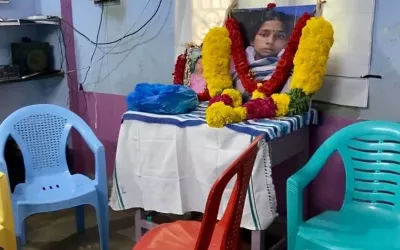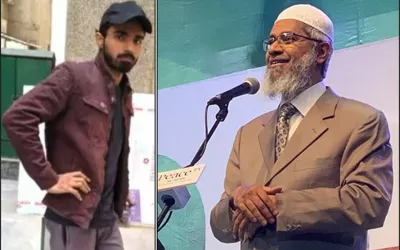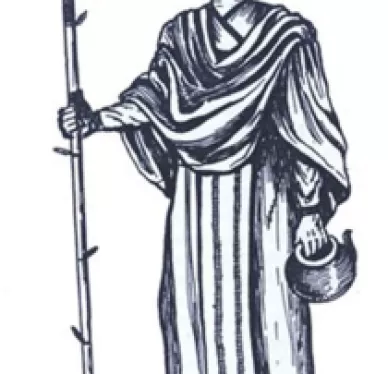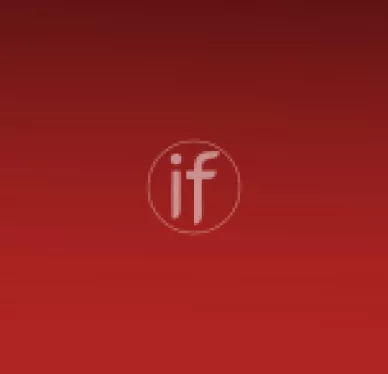Demands, violence, and riots instigated by the elements of Islamic fundamentalism are not new in India. Since the independence, it has been marked that Islamic fundamentalists initially put demands, then put pressure on the respective governments, and then provoke violence & riots in the respective places across India. It has been observed that such incidences have been rising since the last decade, especially after PM Narendra Modi led the National Democratic Alliance (NDA) Government, which was elected in 2014 in India. After 2014, one of the major riots by Muslims in India was observed after the passing of the Citizenship Amendment Bill. Although the Bill was constitutionally passed by both the Houses of the Parliament and even after PILs against the Bill were dismissed by the Supreme Court, the Muslim community, which is said to be the minority in India, continued violent protests for 4 to 5 months across the country. This incident once again raised a question: Will the Muslim community accept the decision peacefully given by the judicial system on the Hijab? However, this article highlights Karnataka’s Hijab row and discusses some previous judgments given by the Indian judicial system on the wearing of Hijab in Government & private organizations.
Karnataka's Hijab row
Once again, the community has disturbed the harmony over the wearing of the Hijab in educational institutions in Karnataka. Suddenly one day, some Muslim girls arrived at the college wearing Hijab. The principal stopped them and told them to remove their Hijab and attend the college in their uniform as per college rules. Earlier these girls used to wear college uniforms regularly. What happened suddenly? And why did they come up with Hijab? These few girls have disturbed the educational institutions across the country. They started protesting outside the college gate by saying it was their fundamental right guaranteed by Article 25 of the Constitution. The students of other faiths also came up wearing shawls having their religious signs on them. Hindu students wore saffron shawls while Buddhists wore blue shawls. This incident forced Karnataka's State Government to shut down all educational institutions for three days. Immediately, the PIL allowing Hijab in educational institutions was filed in the Karnataka High Court. However, the decision is yet to come. Earlier also some similar incidences have been observed by the judicial system. Let us see one by one what the judicial system replied.
(1) Supreme Court on wearing of Hijab on exam day
In the year 2015, the Supreme Court, while hearing a Muslim organization’s petition challenging the CBSE's circular on dress code for students appearing for the AIPMT (All India Pre-Medial Test) re-test on July 25, on Friday, had refused to allow the wearing of a Hijab during the pre-medical test. The SC had said that it's a small issue & faith won't disappear by not wearing it on a day. In its ruling, the SC bench headed by Chief Justice HL Dattu had said that the instructions on dress code issued by the Central Board of Secondary Education (CBSE) are a "small issue" as the faith of Muslims will not "disappear" if they do not wear Hijab for a day.
The Students Islamic Organization of India (SIOI) had moved the SC seeking a ban on CBSE's instructions that bar students appearing for AIPMT re-test from wearing "scarf, full-sleeved shirts and shoes". The CBSE had issued a circular on the dress code after the apex court instructed it to re-conduct the medical entrance test after the alleged question paper leak and cheating in the test originally conducted on May 3 2015. Students were allegedly caught using devices hidden in their clothes for cheating.
The SIOI argued in its PIL that the dress code issued by the CBSE will lead to violation of their "rights guaranteed under Article 25 of the Constitution of India". "The petitioners have limited but serious objection to this notification so far as it prohibits "scarf", "hair pin" and "hair band", and also mandates that all candidates wear only "half sleeves" clothes "not having big buttons," the India Today had quoted lawyer Shadan Farasat, who represents SIOI, as saying. "All the three petitioners are practicing Muslim girls, who dress as per the religious mandate. This requires them to wear scarf and Hijab. This, in turn, requires hair pin for affixation. Further, as per the religious mandate, they wear full sleeve clothes while appearing in public. If the above portions of the notification of CBSE are enforced, the petitioners will not be in a position to appear for AIPMT scheduled for July 25, 2015, which would amount to blatant violation of their rights guaranteed under Article 25 of the Constitution of India," Farasat had said.
After issuing the dress code circular, the CBSE had clarified that they do not bar students from wearing their customary dress but only want to prevent "inconvenience to the candidates during frisking by metal detectors". "There is no bar on wearing a customary dress or for such candidates appearing from centres in extreme climatic conditions. However, such candidates should ensure their presence for frisking by a metal detector at least half an hour before the last reporting time, i.e. 9.30 am. All examination centres have been advised accordingly. The candidates are requested to cooperate with the board and the examination centres to maintain the sanctity of the re-examination being held as per orders of the Hon'ble Supreme Court of India," The Indian Express had quoted CBSE as saying.
(2) Bombay HC on Fathema Hussain Sayed Vs. Respondent: Bharat Education Society and Ors
The petitioner being a student was asked by the school principal not to attend class if the petitioner wears a head-scarf. The petition was filed on the same ground that it amounts to a violation of the fundamental right of freedom of conscience and professing and practicing Islam religion. It was filed for not allowing a girl student to wear a head-scarf in exclusive girls. In this petition, the Bombay High Court said that not allowing a girl student to wear a head-scarf in an exclusive girl’s school cannot be said to be inconsistent with verse 31 or violating any injunction provided in Holy Quran. The court further said that it is not an obligatory overt act enjoined by the Muslim religion that girls studying in all girl schools must wear headcovers. The essence of the Muslim religion or Islam cannot be said to have been interfered with by directing the petitioner not to wear a head-scarf in school, the court said and dismissed the petition.
Petitioner’s counsel placed verse 31 of chapter 24-64 ofHoly Quran (Quran-E-Majid) before the court and said it is mandatory as per Islam. Following is the verse 31 as mentioned in the judgement-"31. And say to the believing women that they cast down their looks and guard their private parts and not display their ornaments except what appears there of, and let them wear their head-coverings over their bosoms, and not display their ornaments except to their husbands or their fathers, or the fathers of their husbands, or their sons, or the sons of their husbands, or their brothers, or their brothers sons, or their sister’s sons, or their women, or those whom their right hands possess, or the male servants not having need (of women), or the children who have not attained knowledge of what is hidden of women; and let them not strike their feet so that what they hide of their ornaments may be known; and turn to Allah all of you, O believers! so that you may be successful.”
After this debate, the court said that a girl student not wearing the head-scarf or head covering studying in exclusive girls section cannot be said to in any manner acting inconsistent with the aforesaid verse 31 or violating any injunction provided in Holy Quran. It is not an obligatory over act enjoined by Muslim religion that a girl studying in all girl section must wear head-covering. The essence of Muslim religion or Islam cannot be said to have been interfered with by directing petitioner not to wear head-scarf in the school. The court further said that we, therefore, do not find any merit in the contention of the learned counsel for the petitioner that direction given by the Principal to the petitioner on 28.11.2001 to not to wear head-scarf or cover her head while attending school is violative of Article 25 of Constitution of India.
(3) Kerala High Court on Writ Petition by Fathima Thasneem (Minor), Hafzah Parveen, (Minor)
Religious dress in a private educational institution was the issue in this writ petition. The petitioners were students, who were studying in Christ Nagar Senior Secondary School, a CMI Educational Institution. They were represented in this writ petition through their parents. The petition was dismissed by Kerala High Court the Justice A.Muhamed Mustaque while making following comments-
The right to establish, manage and administer an institution is equally a Fundamental Right. This Fundamental Right is traceable under Article 19 of the Constitution of India, of course, subject to reasonable restrictions.
Fundamental Rights are either in nature of the absolute right or relative right. Absolute rights are non-negotiable. Relative rights are always subject to the restriction imposed by the Constitution. The religious rights are relative rights (see Art 25 of the Constitution). In the absence of any restriction placed by the State, the Court need not examine the matter in the light of restriction under the Constitution.
In every human relationship, there evolves an interest. In the competing rights, if not resolved through the legislation, it is a matter for judicial adjudication. The Court, therefore, has to balance those rights to uphold the interest of the dominant rather than the subservient interest.
The dominant interest represents the larger interest and the subservient interest represents only individual interest. The dominant interest, in this case, is the management of the institution. If the management is not given free hand to administer and manage the institution that would denude their fundamental right. The Constitutional right is not intended to protect one right by annihilating the rights of others.
In such view of the matter, I am of the considered view that the petitioners cannot seek imposition of their individual right as against the larger right of the institution. It is for the institution to decide whether the petitioners can be permitted to attend the classes with the headscarf and full sleeve shirt. It is purely within the domain of the institution to decide on the same.
The Court cannot even direct the institution to consider such a request. Therefore, the writ petition must fail. Accordingly, the writ petition is dismissed. If the petitioners approach the institution for Transfer Certificate, the school authority shall issue Transfer Certificate without making any remarks. No doubt, if the petitioners are willing to abide by the school dress code, they shall be permitted to continue in the same school.
What will be the Karnataka High Court's decision on wearing Hijab in educational institutions?
The PIL is still pending in the Karnataka High Court. However, the court directed the State Government to reopen the school and asked the students to come in their regular uniforms till the final decision. The petitioner's advocate placed Hadith, Islamic literature, before the court and tried to justify that wearing of Hijab is necessary as per Islamic law and said that it is their fundamental right guaranteed under Article 25 of the Constitution. However, the Hon'ble High Court said that Constitution is their Bhagwat Gita in the replay. The Karnataka High Court judge said, “We will go by what Constitution says. Constitution is the Bhagavad Gita for me and I shall abide by it." Ignoring the court direction, some Muslim parents send their daughters with Hijab. However, the administration strictly told them to remove the Hijab to enter the institute. Some students enter by removing their Hijab while some denied removing it. As per media reports, total 43 Muslim girl students denied to remove their Hijab. Out of the total, thirteen students skipped their Class X pre-board exam. This is the sign of rise of Islamic fundamentalism, however, as India is not an Islamic country, the court’s decision will decide on wearing of Hijab in educational institutions as per Constitution of India.
References
Judgement of The High Court Of Kerala At Ernakulam on WP(C).No. 35293 of 2018, Fathima Thasneem (Minor) & Hafzah Parveen, (Minor) Vs The State Of Kerala, The Director Of Public Instructions, The Secretary, Central Board Of Secondary Education, The Principal, Christ Nagar Senior Secondary School, The Manager, Christ Senior Secondary School.
Judgement of The High Court Of Bombay on Writ Petition No. 1096 of 2002, Fathema Hussain Sayed Vs. Respondent: Bharat Education Society and Ors.









Comments
Add new comment